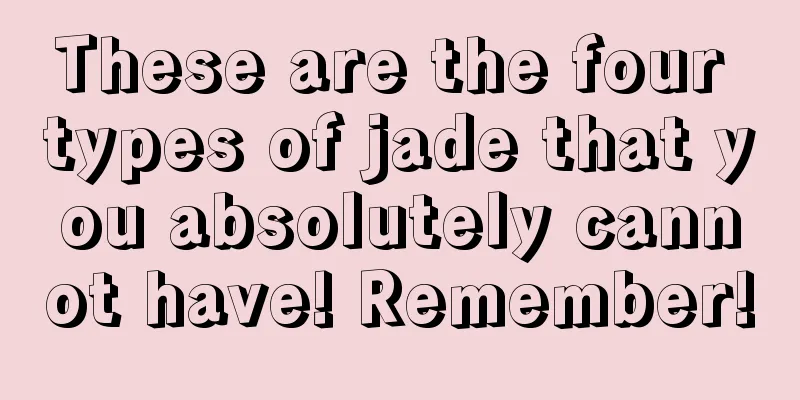How to choose jadeite lucky beans?

|
Jade wealth beans are also called blessing beans, which is homophonic to "福到" (good fortune has arrived), and have rich meanings, and are loved by many people. The jade beans are full and round, with an attractive icy color, delicate and moist, making them hard to put down. They are an excellent choice for heirloom, collection, gift, and wearing. So, do you know how to choose jade beans? 1. Look at the body shape Length: If it is inlaid with a gold chain, 25-33mm is more suitable; if it is paired with a rope, 33-40mm is more suitable, which mainly depends on the wearer's body shape and preference. Width: Generally, the width of the beans should be 38%-40% of their length. If it is too thin, the beans will be long and ugly; if it is too fat, the beans will be flat, especially the bean in the middle, which will feel deformed. Thickness: The thickness of the beans should be 50%-60% of the width, which is appropriate. The beans should be full enough, with no flat surface on the top, but not too high. 2. Look at the carving Lines: The lines on both sides of the beans should be beautiful, not stiff, and certainly not randomly offset. The end of the beans should not be abrupt, and certainly not rigid, otherwise it will affect the spirituality and temperament of the beans. Size: Generally speaking, the top bean is the smallest, the middle one is the second largest, and the bottom one is the largest. Sometimes it is okay for the beans in the middle and at the bottom to be about the same size, as long as it does not affect the overall appearance. Shape: The beans are nearly spherical, appearing plump and round, and the curved surface of the beans should be perfect, without any flat surfaces or even sharp edges. Connection: The two connections of the three beans should be reasonable. If the connections are too dense, the beans will appear severely squeezed; if they are too loose, the beans will appear isolated, affecting the appearance. 3. Look at the fluorescence Fluorescence is determined by both the material and the carving, neither of which can be missing. If there is material but the curvature is wrong, the glow will not be good. Beans with good glow will fluoresce under light, especially side light, which greatly improves the quality of the beans. 4. Look for cracks, cotton and spots Jade beans with cracks and spots are relatively cheap, and the quality is naturally greatly compromised. This is something you need to pay attention to when purchasing. If the fabric has some texture or cotton, you can still buy it as long as the price is right. 5. Look at the color and transparency If the above conditions are met, combined with the color and transparency of the jade itself, it will be perfect. The choice of color varies from person to person. Generally, full green or ice green are the best, more popular, and relatively more expensive. The higher the transparency, the better the quality, the more expensive the price, and the greater the room for collection appreciation. After reading this article, please click on the upper right corner to share it to your circle of friends so that more friends can benefit from it! feicuibbs6 |
<<: What is the process of processing jadeite raw stone into finished product? It's so complicated
>>: The transformation process of an emerald lucky bean, netizens: It’s amazing!
Recommend
How to buy jadeite at a good value? If you don't understand this, you will suffer a great loss...
I believe many people want to know how to buy jad...
Who is suitable to wear the Jadeite Fortune Melon Pendant? Things to note when buying jadeite gourd pendants
Jade is a kind of jade that people often buy nowa...
What is the process of jadeite inlay?
For Chinese women, Pei Cui has a gorgeous appeara...
Inheriting the culture of jade and appreciating the beauty of jade
Since ancient times, there have been many standar...
When did jade first appear? How many years of history does jade have?
Man takes care of jade for three years, and jade ...
Teach you how to judge the quality of jade carving
Jade carving technology is very important There a...
Jadeite - Play with your heartbeat, cultivate your character
Jade has always been regarded as a treasure by th...
Shocking! A piece of violet raw stone is cut into pieces, and each piece is of high quality...
Jade has always been most valuable when it is gre...
Jade appreciation often falls into seven misunderstandings, and insiders are confused
The traces of time left on jade cannot erase peop...
How to choose jadeite? Remember these 5 points
We have talked about a lot of knowledge about how...
Did you know that this is how jade experts select Buddha statues?
It is said that men wear Guanyin and women wear B...
Can Jade also receive hyaluronic acid and beauty injections? I don’t want this kind of jadeite that has undergone plastic surgery, no matter how beautiful it is!
Beauty has two natural enemies: one is congenital...
Jadeite + K-gold, inlay is more than just a combination of gold and jade
In recent years, jewelry with jade inlay and pers...
Jade Appreciation | Enjoy the Zen and soothe your heart~
It is said that Chinese people have no faith, but...
What color jade ring is best?
The "green" color of jadeite has the hi...









